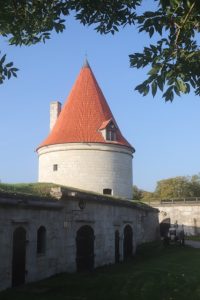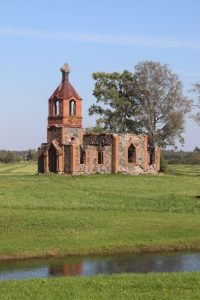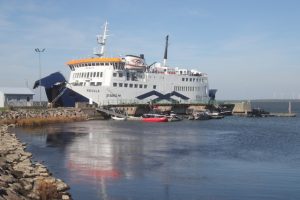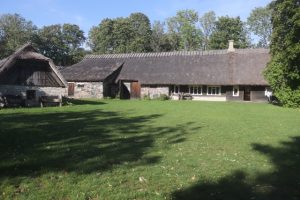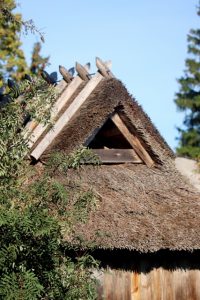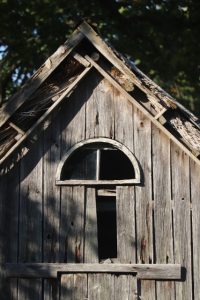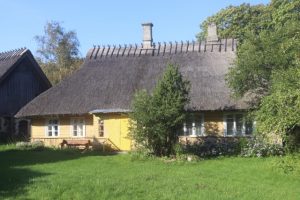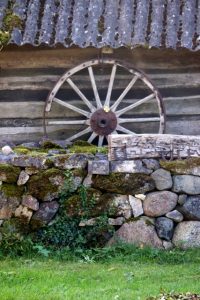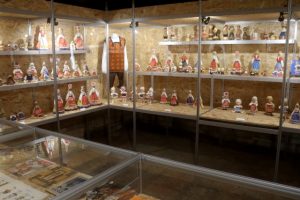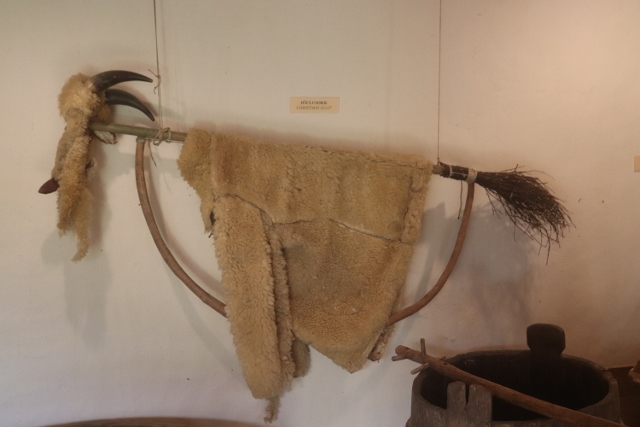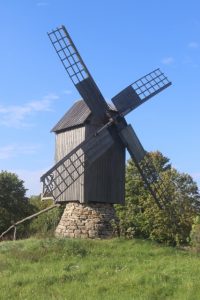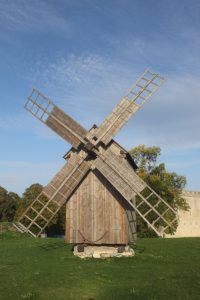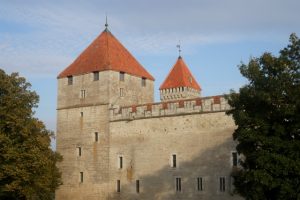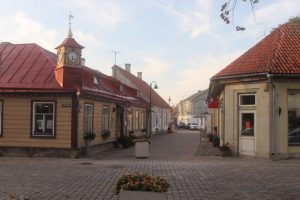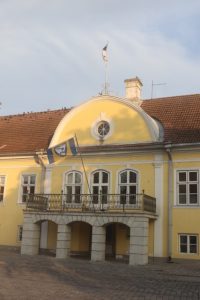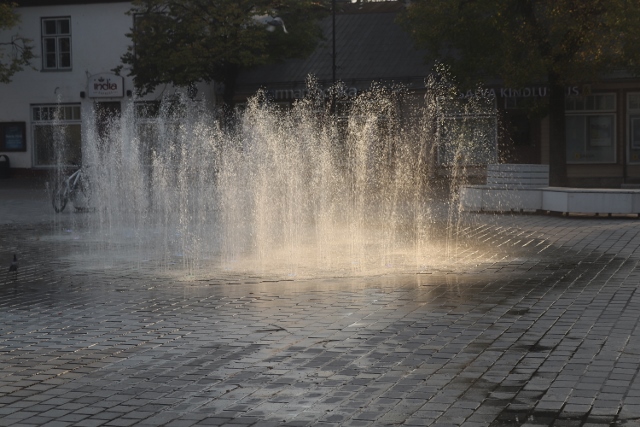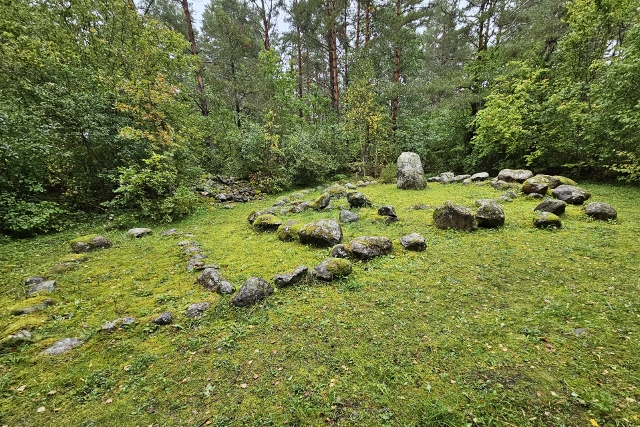Apparently, nobody knows how many islands Estonia has, exactly. There is a list counting 2355, but I imagine that many are small and uninhabited. Saaremaa is the largest, and to get to Saaremaa, you have to go through another island, Muhu. A good start.
Somehow, I had not taken into account that to get to an island, you need to take a ferry again. In Vitshu the road stopped, we bought yet another ferry ticket, and drove onto a remarkably big ship again, which was remarkably efficiently being filled up with cars, and off we went, even before we had the chance to get out of the car and onto the sunny passenger desk. Ideal place for our picnic, which was vastly superior in quality over the selection of hotdogs and burgers available from the counter. And half an hour later we arrived in Muhu.
Being obsessed with wooden houses, we had to see the Muhu museum, another collection of traditional houses. Less of the town house variety we had seen in Finland, more of the rural type, thatched roofs, very low doorways, small rooms. To be honest, clearly different from what we have seen so far, but also as a museum perhaps a little underwhelming. They try to make up with a puppet collection, and with traditional cloths, but overall it was rather a lot of effort for not such a great reward. Actually, the houses around the museum, those where people are still living, were perhaps even more interesting than the demonstration ones. And the windmill, of course, a similar version to the ones we have seen in Finland.
Saaremaa, the next island, is – thankfully – reached by a causeway, no need for another ferry. And Saaremaa is much better organised, clearly a touristic destination, at least for many of the locals. The main town on the island, Kuressaara, is a nice little place, with a cute centre, more wooden houses, and an impressive castle. Which was going to close at 6, last admissions 5.30 pm, so we rushed to be in time. Only to find the caretaker to refuse entry, “museum is closed”. Arguing that it was only 5.25, officially still open, and we would be quick, had no effect, he just stared another five minutes onto his watch, and then said triumphantically, “museum is closed, tomorrow 11 am again”, and closed the door in our face. The first unfriendly, unhelpful Estonian we have met so far – and we would meet no others like him, on the contrary.
So we just admired the castle, and the accompanying grounds, from the outside, in the late afternoon sunlight. The castle is from the 14th century and apparently the only Baltic castle that has not been heavily reconstructed since. After which we settled in our hotel, and explored the town a little further. Including a disastrous visit at the wool shop.
One could easily spend a few days on Saaremaa – locals spend a week here, or more, on their holidays – but the weather turned nasty once again. We managed to fit in a few ancient sites, like the two ancient hill forts, defensive structures, of Poide and Muhu. It is quite amazing that these sites date from the 8th century, were still being reinforced in the 12th century, with sand walls and wooden fortifications, and at least the Poide one lasted to well into the 14th century, whilst at the same time a stone throw away a far more advanced castle was being built in Kuressaara – the impressive one we saw yesterday.
Just before reaching the ferry back to the mainland we encountered the Mala burial site, much older than the hill forts, and dating back to probably 500 BC. Another pile of rocks, one could say, but at least recognisable as a cemetery.
On the ferry, in miserable weather this time, we were reduced to lunch with dubious hotdogs.
Next: Tartu.
